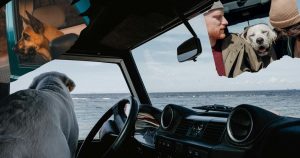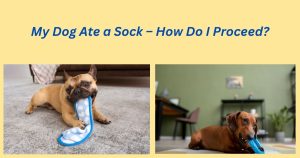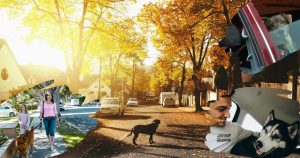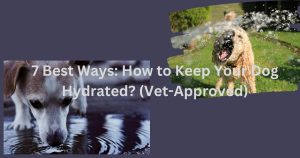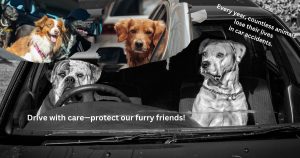In This Article
ToggleDogs are family members, not just pets. But what happens when a dog runs into the road and If a car hits a dog: who is responsible? Who is responsible—the driver or the pet owner? Accidents involving dogs and cars can be heartbreaking and legally complicated. In some cases, the driver may be at fault, while in others, the pet owner may be responsible. The rules depend on local laws, how the accident happened, and whether there was negligence involved, who pays for damages, medical bills, or even legal penalties.
Why Liability Matters
Liability in pet accidents isn’t just about money—it’s also about responsibility. If a pet owner allows their dog to roam freely near roads, it can be dangerous. On the other hand, if a driver speeds through a residential area and doesn’t stop after hitting a dog, they may be held responsible. Knowing who is liable helps determine who pays for medical bills, property damage, or potential legal fines.
Many people assume that hitting a dog is just an unfortunate accident, but in some cases, it can lead to serious legal consequences. A driver might be sued, fined, or even face criminal charges if they were reckless. Likewise, pet owners could be held responsible if they failed to keep their dog secure.
Understanding these laws is crucial for drivers and pet owners. This article covers legal responsibility when a dog is hit by a car, whether drivers can be sued, insurance coverage, and steps to take after such incidents.
Legal Responsibility in Pet Accidents
- When a dog is hit by a car, it’s not just an emotional tragedy—it’s also a legal issue. Many pet owners assume the driver is automatically at fault, while some drivers believe it’s always the pet owner’s responsibility. The truth depends on traffic laws, pet ownership laws, and whether negligence was involved. Understanding these laws can help both pet owners and drivers avoid legal trouble and prevent accidents in the first place.
General Legal Principles Regarding Pets and Traffic Laws
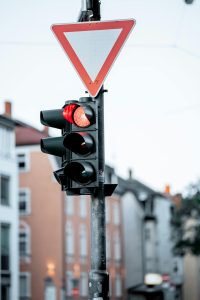
In most places, the law considers dogs as personal property. This means that if a dog is hit by a car, it is legally treated as property damage rather than a personal injury. However, different states and countries have varied regulations on pet accidents.
Some areas have strict animal protection laws, holding drivers responsible if they hit a pet, especially in residential neighborhoods. Other areas place the responsibility on pet owners, expecting them to keep their dogs leashed and away from traffic. There are also laws that require drivers to stop and report an accident involving an animal rather than leaving the scene, as hit-and-run laws sometimes apply to pets as well.
The key legal principle in most cases is negligence. Not taking necessary precautions to avoid injury is considered negligence. Either the pet owner or the driver can be found negligent, depending on the situation. Most traffic laws require drivers to exercise reasonable care when driving. This means a driver must pay attention to the road, follow speed limits, and try to avoid hitting animals when possible. But the law also expects pet owners to keep their pets under control and not allow them to run freely into traffic.
The Role of Pet Owners vs. Drivers in Ensuring Safety
Pet Owners’ Responsibility

Both pet owners and drivers have legal duties to prevent accidents. Pet owners must ensure their dogs are properly secured, whether by keeping them indoors, in a fenced yard, or on a leash when outside. In places with leash laws, allowing a dog to roam freely near traffic is often considered negligence. Even if no leash law exists, an owner may still be held responsible if their dog causes an accident by running into the road.
Drivers’ Responsibility

Drivers are expected to be cautious, especially in residential areas or near parks where pets are commonly found. If a driver speeds through a neighborhood, drives while distracted, or fails to slow down when they see an animal in the road, they could be held responsible for hitting a dog. Some areas even require drivers to take reasonable action to avoid hitting an animal, like braking or swerving if it is safe to do so.
If a car hits a dog: who is responsible?
Liability in pet accidents depends on who was negligent in the situation. Negligence means someone failed to act responsibly, leading to an accident. Courts look at the circumstances of the accident to determine fault.
When the Driver Is Liable
A driver may be liable for hitting a dog if they were reckless or negligent, such as speeding, driving under the influence, or texting. Even if a dog runs into the road unexpectedly, a distracted driver could share blame. Driving too fast in pet-friendly areas can also lead to liability. They could be held responsible for not slowing down in an area where pets and children are common.
Hitting a dog in a safe area like a sidewalk, park, or crosswalk increases driver fault. If a dog is on a leash and walking with its owner is hit by a car jumping a curb, the driver is almost always liable. Many states require drivers to stop and report hitting a domestic animal. Leaving may result in fines or criminal charges. In some areas, it’s illegal to hit an animal and keep driving. If at fault, a driver may owe medical costs, replacement fees, and emotional distress damages or other damages.
When the Pet Owner Is Liable
In most situations, pet owners are held responsible if their dog is hit by a car while off-leash and running into traffic. If a dog escapes from a yard due to a broken fence or an open gate, the owner could be considered negligent for failing to secure their pet. Even in areas without strict leash laws, courts often rule that it is the owner’s responsibility to keep their pet under control. If a dog darts into the road and causes an accident—either by getting hit or by making a driver swerve and crash—the pet owner could be held legally responsible for the damage.
Some cases become more complex when a dog is hit in a residential area where drivers are expected to be cautious. If a dog is hit in front of their own home in a quiet neighborhood, a court might find that the driver and the pet owner share responsibility.
The dog escaped due to owner negligence
If an owner didn’t secure their yard or left the door open, and the dog ran into the street, they could be held liable.
The dog was in the road without control
Even if there are no leash laws, the owner is responsible for ensuring their dog doesn’t wander onto busy roads. If a pet owner is found liable, they may have to cover the driver’s car repair costs, medical bills if the driver was injured, and any legal fines for violating leash laws.
If the pet owner is at fault, they may have to cover the driver’s car repair costs and could be fined for violating local pet laws.
Shared Responsibility and Comparative Negligence

Some cases are not black and white. Courts may determine that both the driver and the pet owner share responsibility for the accident. This is called comparative negligence. For example, if a driver was going 10 miles over the speed limit and a dog ran into the street off-leash, both the driver and the pet owner might be partially at fault. In a comparative negligence case, the court assigns a percentage of fault to each party, and any compensation is adjusted based on those percentages.
In these situations, a driver might have to pay for part of the damages, while the pet owner covers the rest.
Can You Sue a Driver for Hitting Your Dog?
Losing a dog in a car accident is devastating, and many pet owners wonder if they can take legal action against the driver. The answer depends on whether the driver was negligent or if the accident was unavoidable.
When Is a Driver Liable for Hitting a Dog?
A driver can be held legally responsible if they were driving recklessly or failed to take reasonable care to avoid hitting the dog. If a driver was speeding, distracted, or under the influence, they might be considered negligent. Hitting a dog in a designated safe area, such as a sidewalk, park, or crosswalk, also increases the chance of the driver being found liable. In some cases, if a driver intentionally hits a dog, they could face criminal charges for animal cruelty.
The driver was distracted. Texting, eating, or talking on the phone while driving might prove negligence. The dog was hit in a designated safe area. If a driver hits a dog on a sidewalk, crosswalk, or in a park, they are more likely to be liable. However, if the dog ran into the road unexpectedly or was off-leash in an area where leash laws apply, the owner is usually considered responsible. In most places, the law views pets as property, meaning the pet owner has a duty to keep their dog from running into traffic.
Proving Negligence in a Lawsuit
To sue a driver successfully, the pet owner must provide evidence that the driver was negligent. This can include witness statements, surveillance footage, dashcam recordings, or police reports. Some states follow comparative negligence laws, meaning that if both the driver and the pet owner share fault, the court may reduce any compensation based on their level of responsibility.
Laws also vary by location. Some states consider pets as valuable property, allowing pet owners to sue for not only vet bills but also emotional distress. However, many courts do not award damages for emotional suffering, only for financial losses. Consulting a local attorney is often necessary to understand what legal options are available.
Possible Outcomes of a Lawsuit
If a driver is found responsible, they may have to compensate the pet owner for veterinary bills, the market value of the dog, and in some cases, burial or cremation costs. If the owner can prove significant emotional distress, some courts may award additional damages. However, these cases can be difficult to win, and legal fees may outweigh the potential compensation.
Lawsuits can be complicated, and most cases are settled through insurance claims rather than court. If a pet owner believes a driver was at fault, they should document everything immediately and seek legal advice before filing a lawsuit.
Does Car Insurance Cover Dog Damage?
When a car hits a dog, insurance coverage depends on the type of policy the driver has. Car insurance may cover damage to the vehicle, but coverage for the dog itself is different and depends on whether the pet owner has pet insurance.
Comprehensive vs. Liability Insurance
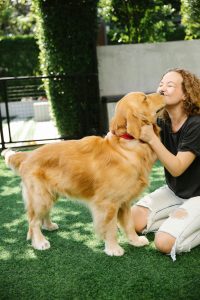
If a driver has comprehensive insurance, it typically covers vehicle damage from hitting an animal, including a dog. Comprehensive insurance protects against unexpected events such as collisions with wildlife, theft, and natural disasters, weather-related damage, theft and vandalism. However, if a driver only has liability insurance, which covers damage to other people and property, they will likely have to pay for their own car repairs.
What If the Driver Gets Sued?
If the pet owner sues the driver, the driver’s liability insurance may cover legal fees and any settlement costs if the driver is found responsible. However, liability coverage does not usually apply if the dog was off-leash or if the accident was unavoidable.
Pet Insurance and Compensation for Owners
Pet insurance can help cover the cost of veterinary care if a dog survives an accident. Some policies also provide death benefits, compensating the owner if their pet dies due to an accident. However, standard car insurance does not pay for a pet’s medical bills or compensate the owner for the loss of their pet.
If a driver hits a dog and it results in damage to their car, they should file a claim with their insurance company. The pet owner may also be held responsible for the damage if the dog was off-leash and ran into the road, depending on local laws.
What to Do If Your Dog Gets Hit by a Car and Dies?

Losing a dog in a car accident is emotionally overwhelming. While grief is inevitable, handling the situation calmly and properly is essential for both legal and emotional reasons. Here are the key steps to follow if your dog is hit by a car and passes away.
Stay Calm and Ensure Safety
When an accident occurs, it is crucial to stay calm. If you’re in the road with your dog, make sure to check your surroundings. If it’s safe, move your dog off the road to avoid further accidents. However, don’t put yourself in harm’s way. If the area is dangerous, wait for emergency services. Always prioritize your safety before handling the situation.
Check for Signs of Life
If your dog is still alive, assess the extent of their injuries. Look for breathing or signs of a pulse. In some cases, even if your dog appears unresponsive, they might still be alive and in need of immediate care. Call your vet or emergency animal services to help with transportation to a hospital. If your dog has passed away, it is important to confirm this before proceeding further.
If the dog has passed, move them safely away from traffic. You may need to wait for the authorities, but do so with caution. Avoid making the situation harder by over-exerting yourself in the initial stages.
Contact the Driver and Gather Evidence
If the driver is still present, it’s essential to exchange information. Ask for their name, contact number, insurance details, and driver’s license number. While many drivers may stop to help, some may leave the scene, especially if the incident is minor. If the driver leaves, try to take note of the car’s make, model, and license plate number.
Take photos of the scene from different angles. This will help establish important facts and details for potential legal action or insurance claims. In addition, gathering witness testimonies can be valuable. Ask anyone who witnessed the accident to write down their account or provide contact details.
Notify Local Authorities
In many regions, it is required by law to notify local authorities if your dog is killed by a car. This might also apply if the driver leaves the scene or if the animal causes a traffic hazard. It’s important to make the call regardless of the severity of the accident. A police report can strengthen your case if you pursue compensation or legal action later on.
Also, check with your local animal control or other authorities to report the accident. In some states or cities, drivers are required to file an official report if they hit a pet, especially if there’s significant damage or injury.
Consider Legal and Insurance Claims
If the driver was at fault due to negligence (e.g., speeding, distracted driving, or drunk driving), legal action may be an option. In this case, it’s critical to consult with a personal injury lawyer to explore possible claims for damages related to veterinary bills, loss of your pet, and even emotional distress in certain jurisdictions.
Additionally, many pet insurance policies cover accidental deaths, so if your dog had insurance, you may be able to claim for the cost of cremation, burial, or even for a new pet (depending on the policy). However, not all insurance policies will cover such instances, so reviewing the specifics of your plan is essential.
Saying Goodbye
While all of this is happening, it’s important to take time for yourself. Losing a pet is similar to losing a member of your family. After handling the legal and practical matters, consider memorializing your dog in a way that feels right— whether it’s burying your dog, having them cremated, or preserving a part of them through a keepsake, take the time to grieve. The emotional impact of such an event is real, and seeking support from friends, family, or professional counselors can help.
Can You Go to Jail for Hitting a Dog on Accident?

While accidents happen, the law takes a strong stance on how drivers should respond when they hit an animal, especially a pet. Legal consequences for hitting a dog depend on the circumstances, but certain actions can lead to serious criminal charges.
Hit-and-Run Laws Involving Pets
Many states have hit-and-run laws that apply to all accidents, including those involving pets. If a driver hits a dog and leaves the scene without stopping or reporting the accident, they could face criminal charges. The severity of the charges often depends on local laws, but leaving the scene of any accident—regardless of whether it involves a human or an animal—can lead to significant legal consequences.
In places where the law mandates drivers to stop after hitting a pet, failure to do so may result in fines, penalties, or even jail time if the incident was deemed particularly harmful or reckless. Drivers must stop, check on the pet’s condition, and contact the necessary authorities. If the pet’s owner is nearby, the driver must also exchange contact and insurance information.
When Could a Driver Face Jail Time?
Jail time could be a possible consequence for drivers who intentionally hit a dog or commit grossly negligent acts, such as driving under the influence of alcohol or drugs. DUI charges can be coupled with more severe penalties if the driver causes harm to a pet or another person while driving impaired. Reckless driving, such as speeding or driving without regard for animal crossing signs, could also result in criminal charges.
Additionally, if a driver is involved in an accident with a pet and does not report the incident, they may face criminal consequences in some locations. These penalties could be more severe if the accident results in significant harm or death to the pet, and the driver leaves without taking any responsibility.
What Should a Driver Do After Hitting a Dog?
To avoid legal consequences, it’s critical for drivers to take immediate action. This includes:
- Stop and ensure safety: Move off the road to prevent further accidents.
- Check on the pet: If the dog is alive, call for immediate veterinary assistance. If it’s safe, move the pet out of the road.
- Contact the authorities: If required by law, file a police report.
- Document everything: Take photos of the scene, the vehicle, and the dog’s condition to have a clear record of the event.
Compensation for Hitting a Dog: Can Pet Owners Claim Damages?
In the unfortunate event that a dog is hit by a car, pet owners may be entitled to compensation. The type and amount of compensation vary depending on local laws, the driver’s liability, and the insurance coverage involved.
When Can a Pet Owner Receive Compensation?
Pet owners can receive compensation if the driver was at fault, and the circumstances were such that the driver could have avoided hitting the dog. For example, if a driver was speeding in an area where pets are known to be present or was distracted by their phone, they may be held responsible. Pet owners can seek damages for things like:
- Medical bills for treatment of the dog’s injuries
- The market value of the dog, especially if it was a rare or purebred animal
- Burial or cremation costs for the pet
If the dog was in a designated safe area like a sidewalk or crosswalk, and the driver failed to stop or take reasonable precautions, the pet owner may also be entitled to compensation for the emotional distress caused by the accident.
How Does Pet Insurance Cover Accidents?
Pet insurance can offer some financial relief after a dog is hit by a car, especially when the dog survives the accident. Many pet insurance policies cover veterinary treatment for injuries sustained in accidents, including surgeries, medication, and hospitalization. Some insurance policies also provide death benefits that can help cover the costs of cremation or burial if the dog dies due to the accident.
However, pet insurance typically does not cover the vehicle damage or the emotional distress of the pet owner. For that, the pet owner would need to explore legal claims or the driver’s insurance.
Understanding the Legal Value of Pets
While pets are legally classified as personal property in many areas, that doesn’t mean their loss is taken lightly. Courts in some jurisdictions have recognized the emotional bond between pet owners and their animals, awarding additional damages for emotional distress in some cases. However, the amount awarded varies significantly and is difficult to predict.
It’s important to note that pet owners should document everything, including any related emotional distress or financial loss, when pursuing compensation. The value of pets in legal claims varies greatly by location and local laws.
Preventing Dog-Related Road Accidents
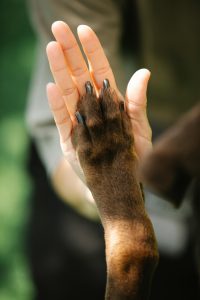
Preventing accidents involving dogs and cars requires effort from both dog owners and drivers. By practicing proper safety measures, you can reduce the chances of an accident, protect your pet, and ensure that roadways are safer for everyone. Below, we delve into essential tips for both dog owners and drivers to prevent such incidents.
The best way to avoid these problems is prevention—drivers should stay alert, and pet owners should keep their dogs safe from traffic.
Safety Tips for Dog Owners
As a dog owner, you are responsible for ensuring the safety of your pet, especially in areas near traffic. The following safety tips will help keep your dog safe, reduce risks, and create a secure environment for them.
Leash Laws and Walking Safely
One of the easiest and most important ways to keep your dog safe is by always keeping them on a leash when walking in public areas, especially near roads. Many cities have strict leash laws that require pets to be restrained, which helps prevent them from running into traffic. Even if your dog is well-behaved, they can easily get distracted by sights, smells, or sounds and dart into the road. Using a strong, non-retractable leash will give you more control. Harnesses, instead of collars, provide better control for pets who tend to pull or make sudden movements.
Secure Fencing and Boundaries
If you have a yard, ensure it is securely fenced to keep your dog contained and prevent them from wandering onto the street. Fencing should be high enough to prevent your dog from jumping over it and have no gaps or weak spots where your dog might slip through. Be sure to inspect the fence regularly for signs of wear and tear. If your dog is known to escape, adding extra measures, like securing gates with latches, will further ensure their safety. It is crucial not to leave your dog outside unsupervised, particularly in busy neighborhoods, as even a few minutes unsupervised could lead to potential danger.
Training Your Dog
Training your dog is an essential part of safety. Teaching commands such as “sit,” “stay,” and “come” can be lifesavers, especially when near roads. If your dog is well-trained, they will be less likely to chase after things that may put them in harm’s way. Leash training is also crucial so that your dog doesn’t pull or break free unexpectedly. If your dog is easily distracted or overly excited, consider using a leash and harness combination that gives you better control, especially near traffic.
Proper Identification
In case your dog gets lost or runs away, make sure they are properly identified. This includes a collar with an ID tag that has your phone number and up-to-date contact information. Another great form of identification is a microchip, which is a permanent ID that can be scanned by any veterinarian or animal shelter. These two forms of identification ensure that even if your dog escapes or gets lost, they can be quickly and safely returned to you.
Precautions for Drivers

Drivers also play an important role in preventing road accidents involving dogs. By remaining vigilant, driving cautiously, and being prepared to react quickly, drivers can help prevent accidents and ensure the safety of animals on the road.
Be Extra Cautious in Residential Areas
In residential areas, the likelihood of encountering a dog on the road is much higher. This is because many people walk their dogs in their neighborhoods, and pets are often allowed outside unsupervised. Drivers should reduce their speed and be extra cautious, especially during early morning or evening walks when visibility is low. Always watch for dogs that may suddenly dart into the road, even if you have the right of way. Many neighborhoods post warning signs indicating the presence of pets, so be aware of these and act accordingly.
Watch for Dog Crossings and Signs
If you are driving in an area with many pets, you might see signs warning drivers of potential dog crossings. These are important to pay attention to, as they indicate areas where dogs are more likely to be wandering or playing near the road. In such areas, drivers should always stay alert, slow down, and be prepared to stop at any moment. Pay close attention to any pets or animals near sidewalks or at the edges of the road, as they might cross the street without warning.
Be Aware at Night or in Low Visibility
Driving at night or in poor visibility conditions such as rain, fog, or snow, can increase the risk of accidents. At night, pets are harder to see, especially if they are dark-colored or blending into the environment. To ensure you see pets in time to react, keep your headlights on high beam when possible, and be cautious in areas where pets may be present. Reducing your speed will give you more time to react if a pet suddenly crosses your path. In low visibility, avoid sudden movements and focus on the road ahead to avoid hitting any animals.
Know How to React If You Encounter a Dog
If you spot a dog on the road, stay calm and be ready to act quickly. The first rule is not to panic. Avoid swerving sharply, as this could cause a more severe accident, potentially endangering other drivers or pedestrians. Instead, brake smoothly and gradually while keeping a steady grip on the wheel. If the dog runs directly into the path of your car, take all precautions to avoid hitting them without losing control of your vehicle. If you can’t avoid hitting the dog, it’s important to stay calm and stop safely to assess the situation.
In Conclusion
Dog-car accidents are heartbreaking but preventable with knowledge, awareness, and responsibility. Pet owners and drivers must work together to avoid them and for pet safety.
For pet owners, pet safety starts with responsibility. Keep dogs leashed near roads, secure yards with sturdy fences, and train basic commands like “sit,” “stay,” and “come.” Proper ID, like a collar tag or microchip, is essential if they get lost. For drivers, Staying alert in pet-heavy areas is crucial. Speeding in residential zones increases accident risks. When approaching a pet, don’t swerve suddenly—Slowing down improves reaction time, and braking smoothly is safer than swerving. If you hit a dog, stop immediately to check on it and show care.
Awareness, calm decisions, responsible actions, and pet insurance help prevent accidents and ease costs. Laws vary by location. Knowing local laws avoids legal issues. Promoting safety reduces risks, distress, and keeps pets protected.


